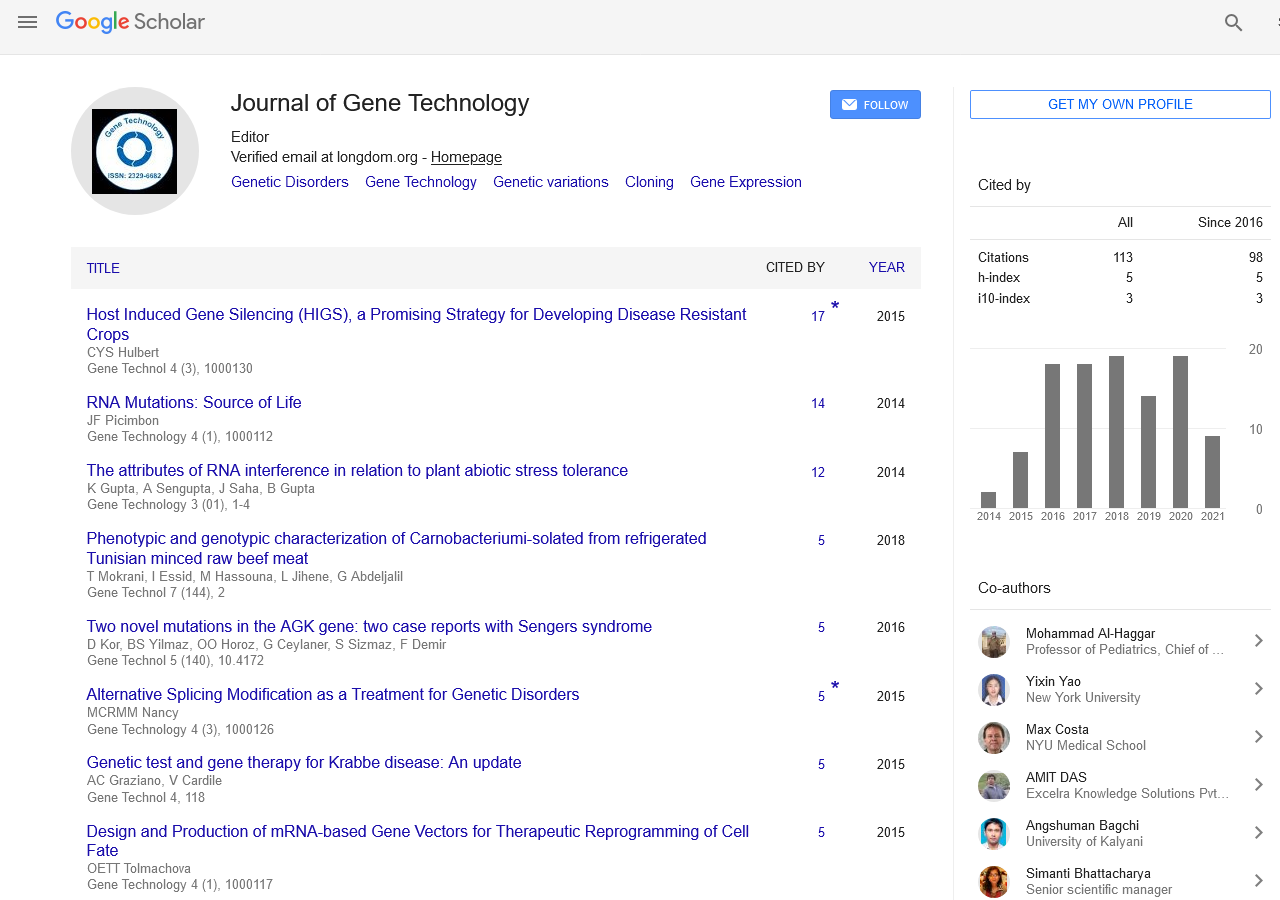PMC/PubMed Indexed Articles
Indexed In
- Academic Keys
- ResearchBible
- CiteFactor
- Access to Global Online Research in Agriculture (AGORA)
- RefSeek
- Hamdard University
- EBSCO A-Z
- OCLC- WorldCat
- Publons
- Euro Pub
- Google Scholar
Useful Links
Share This Page
Journal Flyer

Open Access Journals
- Agri and Aquaculture
- Biochemistry
- Bioinformatics & Systems Biology
- Business & Management
- Chemistry
- Clinical Sciences
- Engineering
- Food & Nutrition
- General Science
- Genetics & Molecular Biology
- Immunology & Microbiology
- Medical Sciences
- Neuroscience & Psychology
- Nursing & Health Care
- Pharmaceutical Sciences
Commentary - (2021) Volume 10, Issue 2
Periods of Eukaryotic Cell Division
Peel Michael*Received: 16-Apr-2021 Published: 07-May-2021, DOI: 10.35248/2329-6682.21.10.163
Introduction
Interphase is the cycle through which a cell should go before mitosis, meiosis, and cytokinesis. Interphase comprises of three fundamental stages: G1, S, and G2. G1 is a period of development for the cell where specific cell capacities happen to set up the cell for DNA Replication. There are designated spots during interphase that permit the phone to one or the other development or end further turn of events. One of the designated spot is among G1 and S, the reason for this designated spot is to check for fitting cell size and any DNA harm. The subsequent designated spot is in the G2 stage, this designated spot likewise checks for cell size yet in addition the DNA replication. The last designated spot is situated at the site of metaphase, where it watches that the chromosomes are accurately associated with the mitotic axles. In S stage, the chromosomes are recreated all together for the hereditary substance to be kept up. During G2, the phone goes through the last phases of development before it enters the M stage, where axles are incorporated.
Prophase
Prophase is the main phase of division. The atomic envelope is separated in this stage, long strands of chromatin consolidate to frame more limited more noticeable strands called chromosomes, the nucleolus vanishes, and microtubules join to the chromosomes at the circle formed kinetochores present in the centromere. Microtubules related with the arrangement and division of chromosomes are alluded to as the shaft and axle strands. Chromosomes will likewise be noticeable under a magnifying instrument and will be associated at the centromere. During this buildup and arrangement period in meiosis, the homologous chromosomes go through a break in their twofold abandoned DNA at similar areas, trailed by a recombination of the currently divided parental DNA strands into non-parental mixes, known as getting over. line that is at equivalent good ways from the two centrosome shafts and held together by complex edifices known as cohesins. Chromosomes line up in the center of the cell by microtubule sorting out focuses (MTOCs) pushing and pulling on centromeres of the two chromatids consequently making the chromosome move to the middle. Now the chromosomes are as yet gathering and are right now one stage away from being the most snaked and consolidated they will be, and the axle filaments have effectively associated with the kinetochores.
Anaphase
Anaphase is a short phase of the cell cycle and it happens after the chromosomes adjust at the mitotic plate. Kinetochores transmit anaphase-hindrance signals until their connection to the mitotic axle. When the last chromosome is appropriately adjusted and connected the last sign disseminates and triggers the sudden shift to anaphase. This sudden shift is brought about by the actuation of the anaphase-advancing complex and its capacity of labeling corruption of proteins significant towards the metaphase-anaphase change. One of these proteins that is separated is securin which through its breakdown delivers the compound separase that severs the cohesin rings holding together the sister chromatids subsequently prompting the chromosomes isolating. After the chromosomes line up in the center of the cell, the shaft filaments will pull them separated.
Conclusion
Telophase is the last phase of the cell cycle in which a cleavage wrinkle parts the cells cytoplasm (cytokinesis) and chromatin. This happens through the blend of another atomic envelopes that structures around the chromatin which is accumulated at each shaft and the reorganization of the nucleolus as the chromosomes determination their chromatin back to the free state it had during interphase. The division of the cell substance isn't generally rising to and can differ by cell type as seen with oocyte arrangement where one of the four girl cells have most of the cytoplasm.
Citation: Michael P. (2021) Periods of Eukaryotic Cell Division. Gene Technol. 10:163.
Copyright: ©2021 Michael P. This is an open-access article distributed under the terms of the Creative Commons Attribution License, which permits unrestricted use, distribution, and reproduction in any medium, provided the original author and source are credited.
Sources of funding : no


